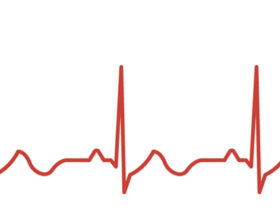A Podiatrist’s Playbook for Pickleball Injury Prevention
By Dr. Isin Mustafa, DPM, MSHS, FACFAS, DABPM
 As a podiatrist, I’ve seen my fair share of sports-related injuries, and in recent years, one sport has steadily risen to the list for foot and ankle complaints: pickleball. What started as a niche activity has exploded in popularity, captivating players of all ages with its accessible learning curve and social appeal. However, this seemingly gentle sport, with its quick lateral movements, sudden stops, and pivoting, places significant stress on the lower extremities, leading to a unique set of common injuries that often land players in my office.
As a podiatrist, I’ve seen my fair share of sports-related injuries, and in recent years, one sport has steadily risen to the list for foot and ankle complaints: pickleball. What started as a niche activity has exploded in popularity, captivating players of all ages with its accessible learning curve and social appeal. However, this seemingly gentle sport, with its quick lateral movements, sudden stops, and pivoting, places significant stress on the lower extremities, leading to a unique set of common injuries that often land players in my office.
One of the most frequent culprits I encounter is plantar fasciitis. This condition, characterized by inflammation of the plantar fascia—a thick band of tissue running along the bottom of the foot from the heel to the toes—is a classic overuse injury. Pickleball players are particularly susceptible due to the repetitive impact and propulsion involved in quick movements around the court. The constant pushing off and landing can strain the fascia, leading to sharp, stabbing heel pain, especially noticeable with the first steps out of bed in the morning or after a period of rest. Addressing plantar fasciitis early with rest, ice, stretching, and appropriate footwear is crucial to prevent chronic issues and ensure a swift return to the court.
Closely related to plantar fasciitis is Achilles tendinopathy. The Achilles tendon, the largest tendon in the body, connects the calf muscles to the heel bone. In pickleball, the explosive pushes and rapid changes in direction put immense strain on this tendon. Over time, this repetitive stress can lead to inflammation and degeneration of the tendon, causing pain, stiffness, and tenderness in the back of the heel. Neglecting Achilles pain can lead to more severe problems, including partial or complete ruptures, which often require extensive recovery and sometimes surgery. Proper warm-up, stretching, and strength training of the calf muscles are paramount in preventing this debilitating injury.
Beyond overuse, the dynamic nature of pickleball also makes players vulnerable to acute injuries. Ankle sprains are incredibly common, especially inversion sprains where the ankle rolls outward, stretching or tearing the ligaments on the outside of the ankle. The quick lateral shuffles, sudden stops, and unforeseen trips on the court create prime conditions for these awkward landings. While many sprains are mild, some can be severe, leading to significant pain, swelling, and instability. Prompt RICE (Rest, Ice, Compression, Elevation) therapy, followed by a structured rehabilitation program focusing on strengthening and proprioception, is essential to regain full ankle function and prevent recurrent sprains.
Another acute injury I frequently see is a forefoot sprain or turf toe. The rapid stops and pivots can place significant stress on the small joints and ligaments in the forefoot, particularly the big toe joint. If the big toe is hyperextended forcefully, it can lead to a sprain of the ligaments surrounding the joint, commonly known as “turf toe.” This can cause pain, swelling, and difficulty pushing off. While not as dramatic as an ankle sprain, turf toe can be surprisingly persistent and impact a player’s ability to generate power and change direction effectively.
Less common but certainly concerning are stress fractures of the foot and ankle bones. These tiny hairline cracks in the bone are typically the result of repetitive stress without adequate time for recovery. The constant impact of pickleball, especially on hard court surfaces, can gradually wear down the bone, leading to a stress fracture. Pain that worsens with activity and improves with rest is a hallmark symptom. Early diagnosis through imaging and a period of non-weight-bearing or reduced activity are vital to allow the bone to heal and prevent a complete fracture.
From a podiatrist’s perspective, prevention is always the best medicine. I emphasize several key strategies to my pickleball-playing patients:
• Appropriate Footwear: Court shoes designed for lateral support, good cushioning, and a stable outsole are essential. Avoid running shoes, which lack necessary lateral stability.
• Proper Warm-up and Cool-down: Dynamic stretches before play and static stretches after can prepare muscles and tendons and aid in recovery.
• Strength Training: Incorporate exercises for calf muscles, Achilles tendon, and intrinsic foot muscles to reduce injury risk.
• Listen to Your Body: Do not ignore persistent pain. Seek professional evaluation if discomfort doesn’t resolve with rest, or if you notice swelling or instability. Early intervention can prevent minor issues from escalating.
Pickleball is a fantastic way to stay active and social, but like any sport, it comes with inherent risks. By understanding the common injuries and implementing preventative measures, players can continue to enjoy the game for years to come, keeping their feet happy and healthy, and out of my office, for as long as possible.
Don’t let foot pain sideline your pickleball passion! If you’re experiencing any discomfort, schedule an appointment with a podiatrist today to keep your game strong and your feet smiling.
Disclaimer: This content is not intended to be a substitute for professional medical advice, diagnosis, or treatment. Always seek the advice of your physician or other qualified health care provider with any questions you may have regarding a medical condition.
Isin Mustafa, DPM, MSHS, FACFAS, DABPM
Isin Mustafa, DPM, is a Podiatrist at Family Foot & Leg Centers in Sarasota, FL. She is a Fellow of the American College of Foot & Ankle Surgeons.
Call 239-430-3668 or visit www.NaplesPodiatrist.com to make an appointment. Visit FootHealthFacts.org to learn more about foot and ankle conditions.
3110 Fruitville Commons Blvd,
Suite 102
Sarasota, FL 34240
(Next to Cooper’s Hawk restaurant)
(239) 430 – 3668 (FOOT)
www.NaplesPodiatrist.com






